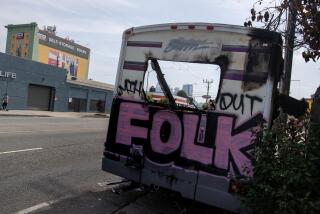City Council committee OKs revised LAPD speeding policy
- Share via
A Los Angeles City Council committee Monday supported a move by the LAPD to change the rules governing when police officers can use a squad car’s lights and sirens to speed through traffic.
When dispatched to an emergency, officers respond “Code 3” -- a status that under state law allows them to break traffic laws as long as they use their lights and siren and show regard for the safety of other drivers.
The Los Angeles Police Department has long followed an unusually strict policy that, generally speaking, only one patrol car per emergency is dispatched Code 3. To skirt the rules, officers commonly drove “Code 2 1/2 ,” an off-the-books practice of racing to a call without lights or sirens to warn other drivers. The unsanctioned practice has been responsible for some of the worst officer-involved traffic collisions, costing the city more than $11 million since 2006.
The new policy would give officers in the field the discretion to decide whether to respond Code 3. But after being approved by the civilian panel that oversees the LAPD, the proposed changes were thrown into limbo last week when the City Council took the rare step of exercising its right to assert authority over police issues. Opposition to the new policy was led by Councilman Bernard C. Parks, a former LAPD chief, who raised concerns that it would lead to chaotic situations on city streets and more accidents.
The council’s four-member Public Safety Committee voted 3 to 1 to support the LAPD’s proposed policy. Parks was the lone dissenting voice after Councilman Dennis Zine, also a former officer, backed away from initial concerns to join Councilmen Jack Weiss and Greig Smith in support of the policy.
The issue will now go before the entire council, although after the committee’s vote it appears unlikely that the council will veto the LAPD’s proposal.
--
More to Read
Sign up for Essential California
The most important California stories and recommendations in your inbox every morning.
You may occasionally receive promotional content from the Los Angeles Times.














